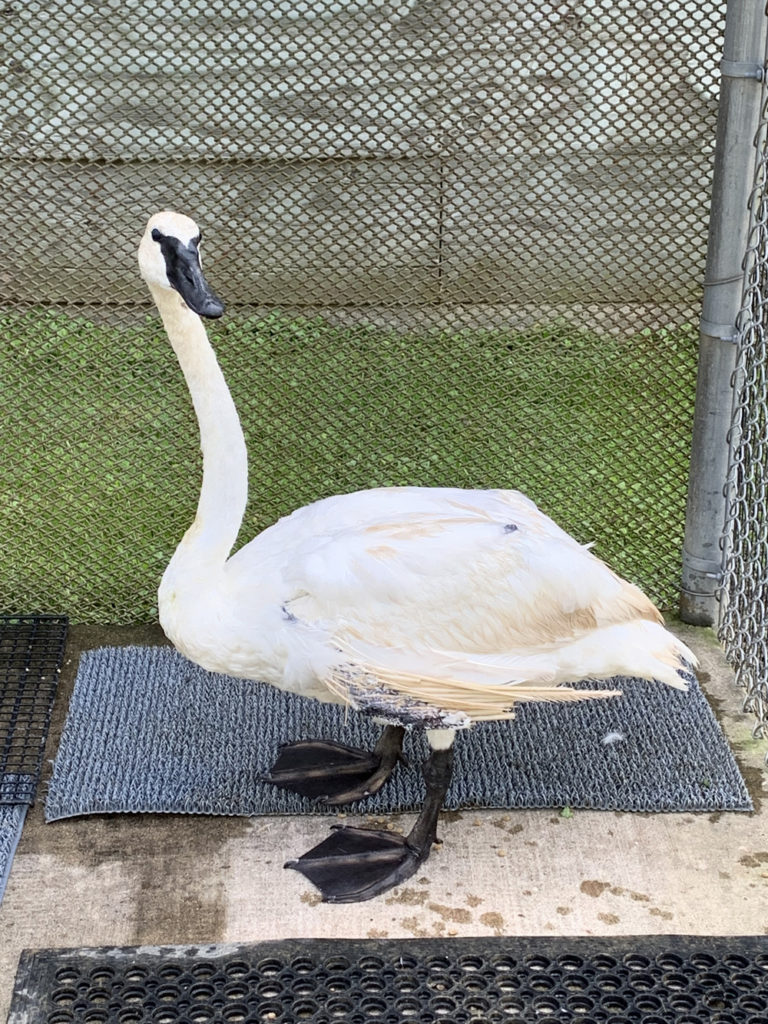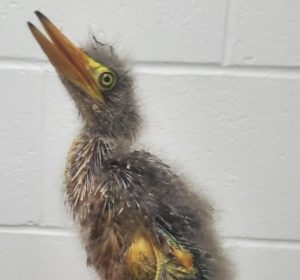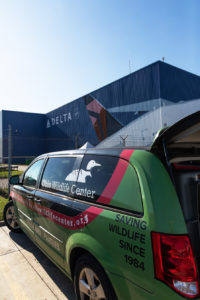Among the hundreds of waterbirds brought to the Wildlife Hospital for care this summer, two species with permanent disabilities have made their way west to enter conservation programs.

A female juvenile Green Heron and a female Trumpeter Swan were transported to Seattle, Washington on September 16 after both had been assessed and treated at the hospital for wing injuries. The Green Heron joined Seattle’s Woodland Park Zoo and the Trumpeter Swan was moved to the Northwest Trek Wildlife Park in Eatonville, Washington. They will be in species conservation programs and the swan is now part of a breeding program. Neither were candidates to be released back to the wild in Ohio.

“We strive to find placements for patients with permanent injuries that will not permit the animal to resume a wild life,” said Stormy Gibson, interim executive director of Ohio Wildlife Center. “Both these animals can now be part of important conservation programs for their species,” she added.
Trumpeter Swans are still on the state’s threatened species list and face threats from pollution, illegal hunting and lead poisoning from fishing tackle left in waterways. As wetland dwellers, the swans forage for stems and leaves in shallow waters. They have black bills and black feet and are the largest waterfowl in North America.
According to the Ohio Department of Natural Resources, there are now 650 swans in the state and 98 breeding pairs. The state pursued active strategies in 1996 to bring the swans back after they nearly disappeared, including creating new wetlands and habitats.
The swan was rescued in July from a local field after a caller notified the Wildlife Center that it appeared injured and was having difficulty walking. At the hospital the swan was assessed and treated for mild pododermatitis and a left wing injury at the carpus.
The juvenile Green Heron was found injured and orphaned on a backyard patio in June in north Columbus. The heron’s mother never returned for the young bird so the homeowners brought it to the Wildlife Hospital after observing an injury on the wing.

The hospital provided care for left wing damage with chronic droop, but the injury was ultimately permanent and left the heron with no viable flying or hunting ability, according to Gibson.
After four months of care, in which it ate smelt, earthworms and crickets, the heron was matched with the Woodland Park Zoo through the Association of Zoos and Aquariums (AZA) placement program.
Green Herons favor wetlands and look for food in shallow water concealed near vegetation. They are one of the world’s few tool-using bird species and will create fishing lures with bread crusts, insects and feathers that they drop on the water to attract fish. While Green Herons are common across North and South America, their numbers are in steep decline.
“Placing a Green Heron is unusual in that they are very secretive birds and don’t typically do well under human care,” Gibson noted. “But this was a very young bird when it was admitted to our hospital and we will pursue a transfer if the bird seems amiable.” The heron will become part of the zoo’s aviary.